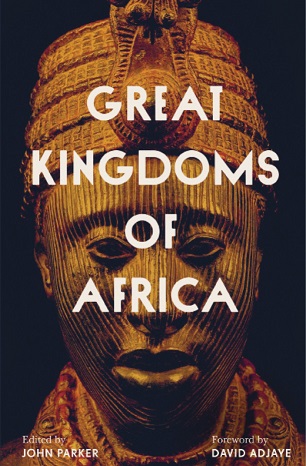Dear Commons Community,
I have just finished reading Great Kingdoms of Africa edited by John Parker and published by the University of California Press. Parker taught the history of Africa at the University of London. For those of us who were educated in the Western Canon, this book is a good introduction to nine kingdoms and cultures that existed in Africa going back millennia to Egypt and Nubia and to the more recent past with the Zulu. It covers a lot of important history and aspects of African cultures including religion, economics, conflicts and of course the slave trade and European influences. It is a slow read mainly because the names of people and places are difficult to follow for those of us unfamiliar with the subject. Regardless, I would recommend it to anyone who would like to fill in a gap in their knowledge of the history of Africa.
Below is a review that appeared in The Past.
Tony
—————————————————
The Past
Great Kingdoms of Africa
Edited by John Parker, University of California Press Thames & Hudson.
Review by Nigel Fletcher-Jones
This volume brings together eight historians of Africa under the editorship of John Parker (formerly at SOAS, University of London) to discuss the origins and structure of kingdoms through time and across the continent – from ancient Egypt and Nubia (the earliest known African kingdoms) to the Zulu kingdom of the 19th century.
In the not-too-distant past it was assumed that it was improbable that these great kingdoms could have emerged without the intervention of some other entity, be that ancient or early medieval Egypt, dar-al-Islam (the Islamic core regions), or various European influences – particularly those associated with the Atlantic slave trade or with settlement. Through the use of oral and precolonial (where available), colonial, and post-colonial written records alongside archaeology and linguistic evidence, the authors put these (at best) dubious notions aside here.
Within 5,000 years of recorded history, many hundreds of African kingdoms rose and fell, but these authors deal with nine of the largest states, groups of states, or empires: ancient Egypt and Nubia, the Sudanic (that is, below the Sahara) empires, the Christian kingdom of Ethiopia, the Yoruba and Benin kingdoms, the Kongo kingdom, Buganda, the Hausa kingdoms and the Sokoto Caliphate, the Kingdom of Asante, and the Zulu kingdom. They attempt to reconstruct their evolutionary development as distinct local phenomena and in relation to their neighbours and predecessors. In doing so, for the most part, the contributors stress the degree to which royal power was related to ritual authority and the king’s role as an agent of fertility. The king was also often seen either as, or descended from, a heroic warrior or a mythical ‘sacred stranger’ from elsewhere. In most of the presented case studies, there is an interesting emphasis, as well, on how checks and balances were applied to the power of kings and emperors through ritual, councils, or the balancing power of chiefs and/or clan leaders.
There is much here of note too concerning the role of Islam and Christianity, and their use by kings as agents of change – in combination with older established beliefs and practices. The roles of trade routes and ecological ‘transition zones’ also attract significant attention and may help to explain why many African peoples did not pursue kingship as much as why others did.
The reader will no doubt find their own areas of interest, but, for this reviewer, Cécile Fromont’s chapter on the Kongo kingdom (the core area of which is encompassed today by Angola and the DRC) stands out. Her chapter emphasises the use to which ancient precedent and powerful new supernatural forces, in this case in the form of Christianity, could be utilised to support the position of the king and in attempting to implement change. A particular flourish is the examination of the role of the Atlantic slave trade in the kingdom – almost half of the Africans transported to the Americas came from Kongo, Angola, and central Africa – and of how some elements of Kongo culture travelled with them.
John Parker’s chapter on the origins of the kingdom of Asante (for the most part bounded by modern Ghana), with its wealth derived from forest agriculture and gold production, and Muhammadu Mustapha Gwadabe’s chapter on the Hausa kingdoms, the Sokoto caliphate (largely bounded by modern Nigeria), and the role of Islam are also particularly notable.
Great Kingdoms of Africa is well-illustrated, with two colour sections. Yet it sits firmly in that class of books in which the authors have restrained themselves from too much unexplained technical vocabulary, but possibly not enough to make the book readily accessible to the general reader. Though, as a contributed volume, it is inevitably sometimes repetitive, there is much that is insightful, new, and useful to commend this book.



